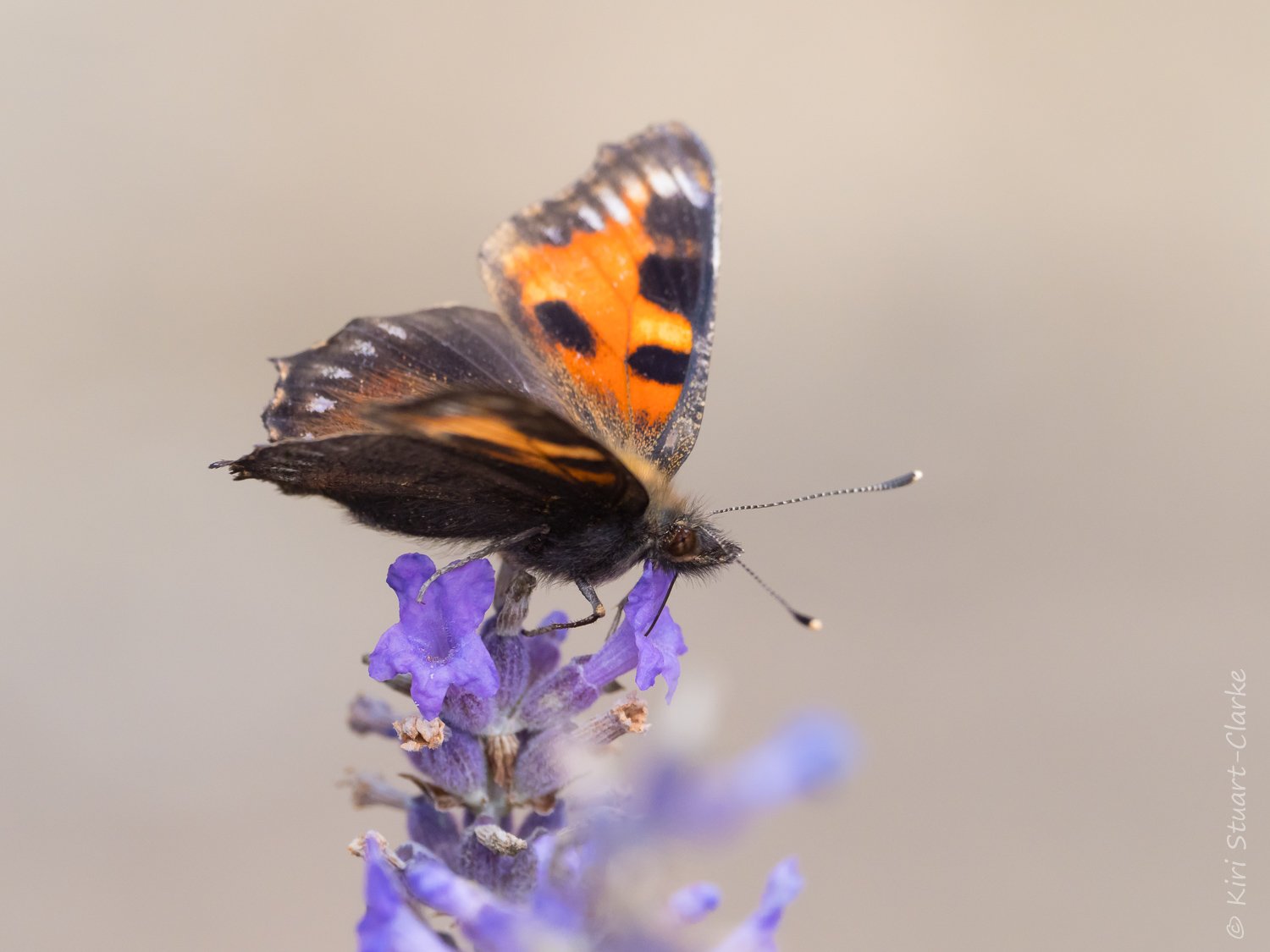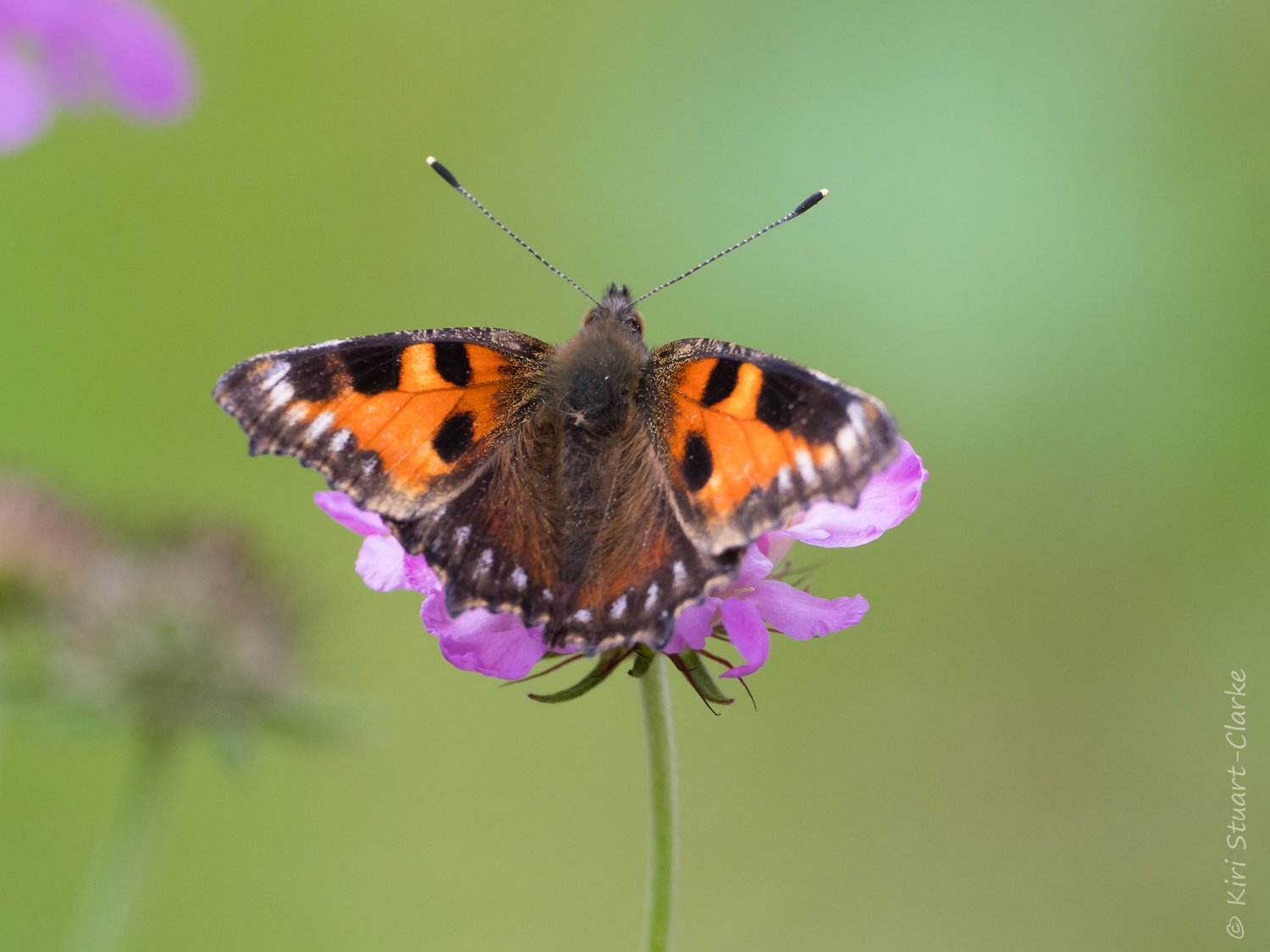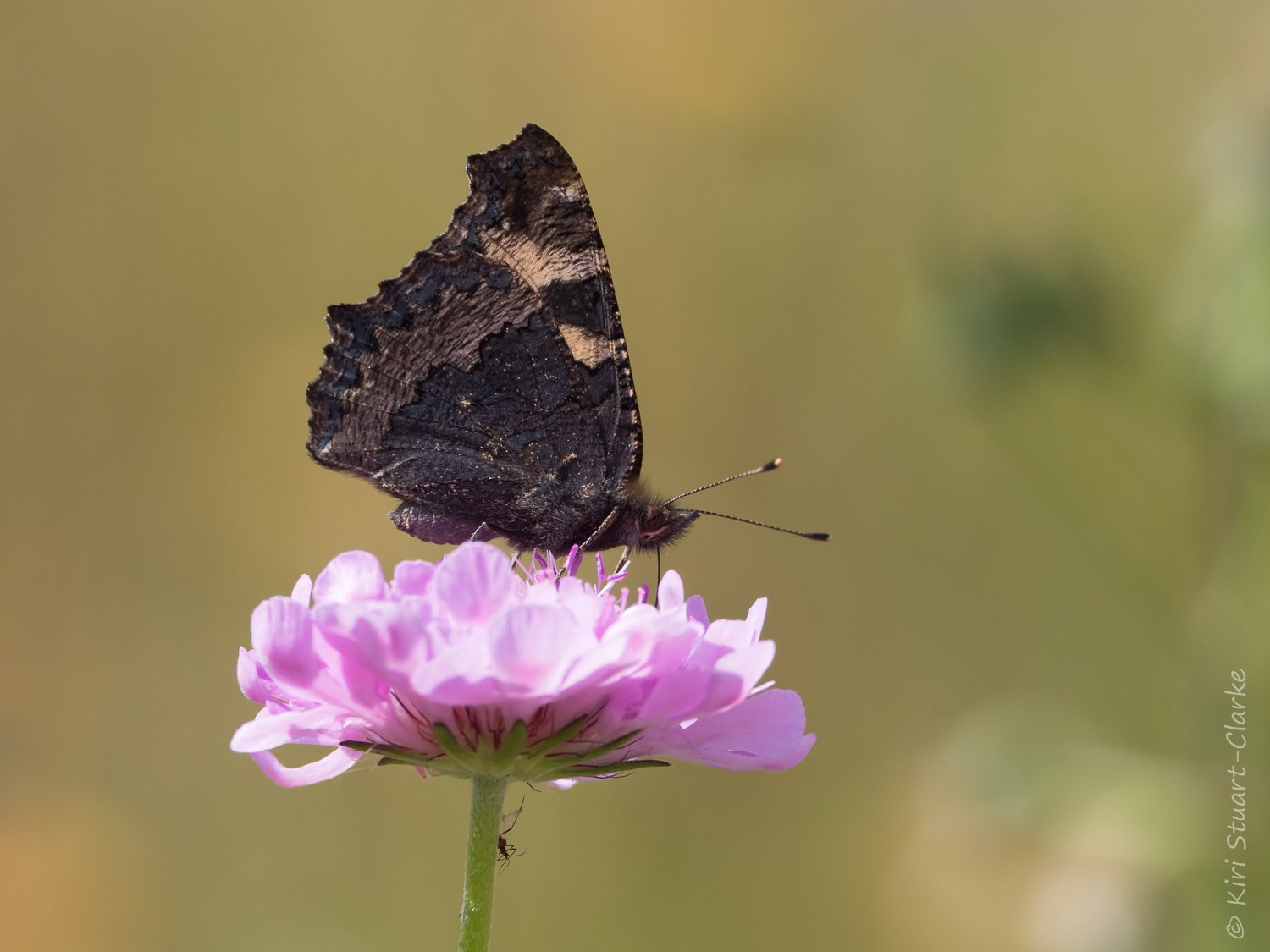A Small Tortoiseshell aberration semiichnusoides butterfly showing merged costal black spots and white marginal streaks instead of blue studs on the forewing and missing the orange band on the hindwings
Our hot late June summer weather didnt last too long, and perhaps could be deemed an aberration in its own right, but it also seems to have had a major impact on our caterpillars while they metamorphosed into butterflies.
I got curious when I spotted this unusually marked Small Tortoiseshell butterfly and discovered a strange world of genetics and temperature driven body chemistry!
It takes about 4 weeks for a caterpillar to metamorphose into an adult butterfly in a fascinating “black box” process that science still knows surprisingly little about.
The term for a butterfly with these atypical variations in markings is “an aberration”, which stems from the latin aberrationem, literally meaning “a wandering”. First used in the 1590s, the modern meaning of “a deviation from the normal type” is attested by 1735.
It turns out that both genetics and abnormal weather (and perhaps even the two in combination) can play a role in triggering these deviations. Aberrations are caused when something interrupts the usual pattern of markings during their development inside the butterfly’s chrysalis. One hypothesis is that sudden temperature “shocks” (in either direction) may trigger melanin release (a dark pigment) to increase or decrease.
Another possibility is the activation of rare inherited “recessive” DNA genes (a gene that requires both parents to have it to be activated) that are atypical because they hinder the chances of an individual finding a mate, or even surviving under normal conditions. They continue however to be carried in the population because they may perhaps aid survival in abnormal conditions.
One example of this is the better known aberration - the dark brown“Valezina” form of the Silver-washed fritillary quite often seen now at Holt at Foxley Woods. Valezina, due to its dark colouration is more able to fly and find nectar in unusually cool temperatures than its typical bright orange counterpart, but which may then be at a disadvantage when it comes to finding a mate and reproducing due to being less readily recognised.
Whether the sudden temperature change we saw at the end of June activated a dormant gene relating to surviving with abnormal weather or coincidentally acted directly on melanin production remains one of the fascinating mysteries of nature.
Small Tortoiseshell Aglais urticae (normal type) vs Small Tortoiseshell (aberration semiichnusoides). Both butterflies are likely to be siblings as they were hosted as caterpillars on my nettle bed and appeared fresh on the same day together.




